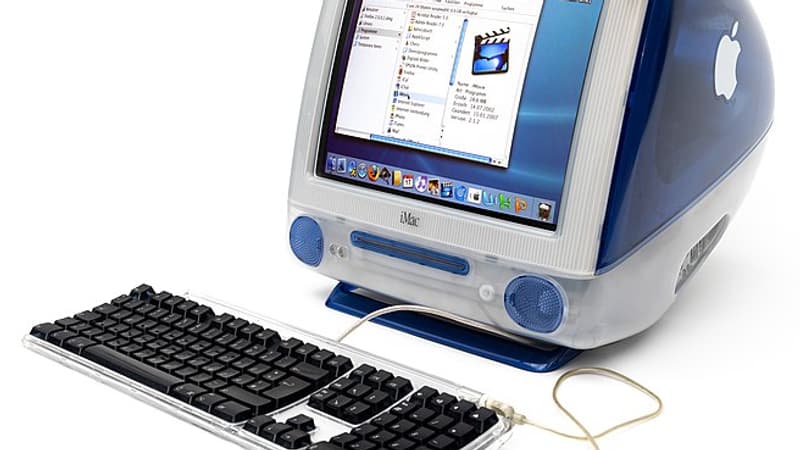Apple’s survival was narrowly at stake. A bet, that of a computer that was going to compete with PCs and the almighty Windows 95. On August 15, 1998, the first iMac was launched. Far from the flat and metallic screens that the brand offers today, the first iMac was a small UFO.
Contrasting with the beige and sad blocks of Dell or Compaq, the object proposed by Apple shows its soft curves and its original colors (first the famous Bondi blue). There’s no trick as it’s all on the screen, designed by Jony Ive, who will also be at the origin of the elegant design of the iPhone and iPod.
A year ago, Steve Jobs returned to lead the company on the verge of bankruptcy. If the brilliant businessman managed to force successful elections on the early Macintoshes in the 1980s (particularly by enforcing the use of the mouse), he was quickly ousted from his own company.
Bet everything on USB
In 1997, thanks to a new shareholding, he returned to be at the top of the firm without bloodshed. So he decides to bet it all on this unlikely iMac that won’t do anything like PCs. As The Verge reminds us, Apple’s computer is the first to fully rely on a promising technology: USB.
Apple also promises a product that is ergonomic and easy to use. What does the “i” stand for on the iMac? Internet. The modem is built in, so it only takes three steps, according to the ad, to get started: plug in the computer, plug in the modem jack, and… no need for a third step.
The appeal of this first iMac, therefore, is not just a matter of design, but its imprint will be striking even if Jony Ive gradually ditch plastic for metal for subsequent models.
The iMac is, above all, a dazzling success. In January 1999, “an iMac is sold in the world every 15 seconds,” explained Thomas Lot, then head of Apple France. In 2001, with the arrival of new models, Apple had sold 5 million machines. And so he laid the first stones of his empire.
Source: BFM TV


